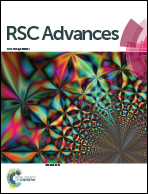Extension of three-dimensional activity cliff information through systematic mapping of active analogs
Abstract
Activity cliffs are formed by pairs or groups of structurally similar or analogous compounds with large potency differences against a given target. Three-dimensional activity cliffs (3D-cliffs) are obtained by comparison of the binding modes of ligands in complex X-ray structures. Currently, 630 high-confidence 3D-cliffs are available for a total of 61 human targets, which provide a knowledge base for structure-based SAR exploration and compound design. In this work, a systematic search for structural analogs of 3D-cliff compounds was carried out applying a variant of the matched molecular pair (MMP) formalism to further extend the structure–activity relationship (SAR) information associated with 3D-cliffs. In many instances, series of active analogs were successfully mapped to 3D-cliffs. Compound relationships were explored in network representations and key compounds involved in the formation of multiple 3D-cliffs and structural relationships identified. In addition, the superposition of analogs onto 3D-cliffs helped to rationalize distinguishing interactions and potency variations. In total, 1980 analogs were identified for 268 cliff compounds active against 50 human targets, which further extended 414 3D-cliffs and provided a variety of SAR environments for further study. A database comprising the currently available 3D-cliffs and assigned analogs has been generated and is freely available.


 Please wait while we load your content...
Please wait while we load your content...